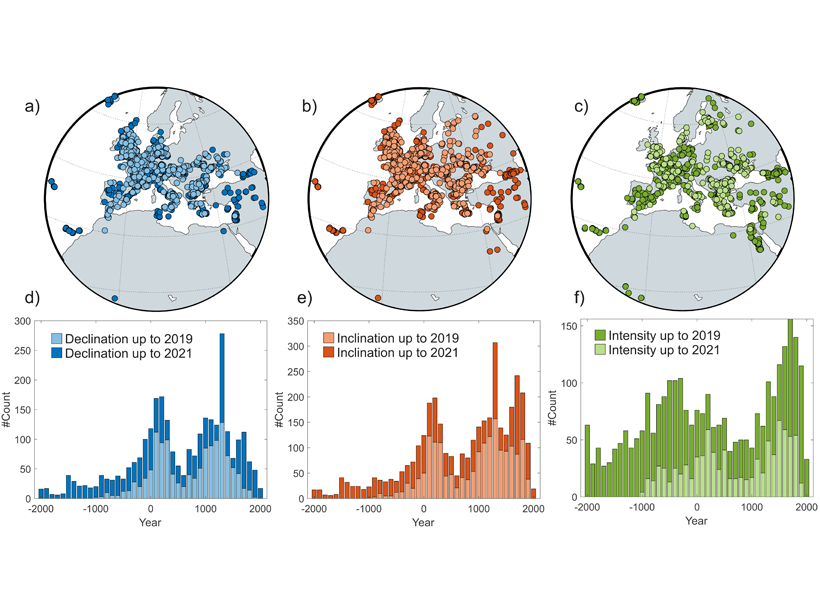Source: Journal of Geophysical Research: Solid Earth
Regional (spherical cap) and global field models are data-driven models that describe the behavior of the geomagnetic field in high resolution for the most recent couple of thousands of years, used to quantify certain field features such as westward drift.
Pavón‐Carrasco et al. [2021] select quality data (both from a geomagnetic point of view and an age dating point of view!) and produce a new spherical cap geomagnetic field model for Europe and surroundings, including the Middle East. They favor spherical caps over global field models for regions with sufficient data coverage, such as Europe, because less extrapolation is required which inherently leads to smooth models. Because now sufficient data are available, the new model captures the Levantine Iron Age Anomaly, a short-lived intensity spike about 3000 years ago in the Middle East, a marked achievement. Its westward movement can be tracked as well, furthering our understanding of the geomagnetic field.
Knowing field behavior in great detail is also important for archeology because it offers a versatile dating tool for burnt structures that record their last usage (or unintentional burning) by locking the ambient geomagnetic field at the time into a permanent magnetic moment. It complements Carbon-14 dating for the last couple of millennia. With the field model and the accompanying web application one can generate the field behavior as function of time for the location of the archeological site itself thus bypassing the error that is made by relocating the site to the location of the related secular variation master curve. This relocation is made on the assumption of a geocentric axial dipole field (one cannot do otherwise) while the field model includes all data and thus takes into account non-dipole contributions.
Citation: Pavón‐Carrasco, F. J., Campuzano, S. A., Rivero‐Montero, M., Molina‐Cardín, A., Gómez‐Paccard, M., & Osete, M. L. [2021]. SCHA.DIF.4k: 4,000 years of paleomagnetic reconstruction for Europe and its application for dating. Journal of Geophysical Research: Solid Earth, 126, e2020JB021237. https://doi.org/10.1029/2020JB021237
—Mark J. Dekkers, Associate Editor, JGR: Solid Earth
Text © 2021. The authors. CC BY-NC-ND 3.0
Except where otherwise noted, images are subject to copyright. Any reuse without express permission from the copyright owner is prohibited.

